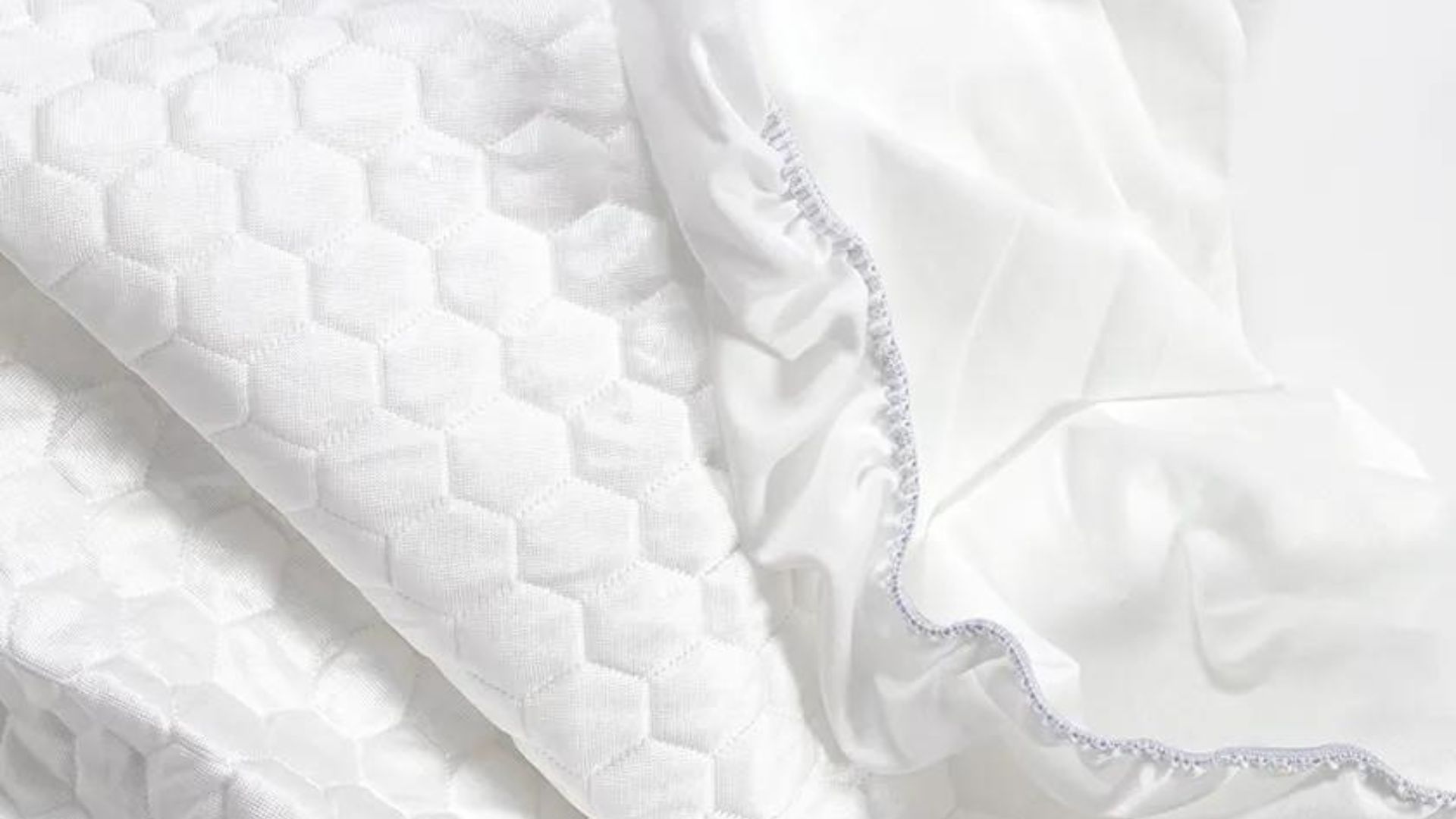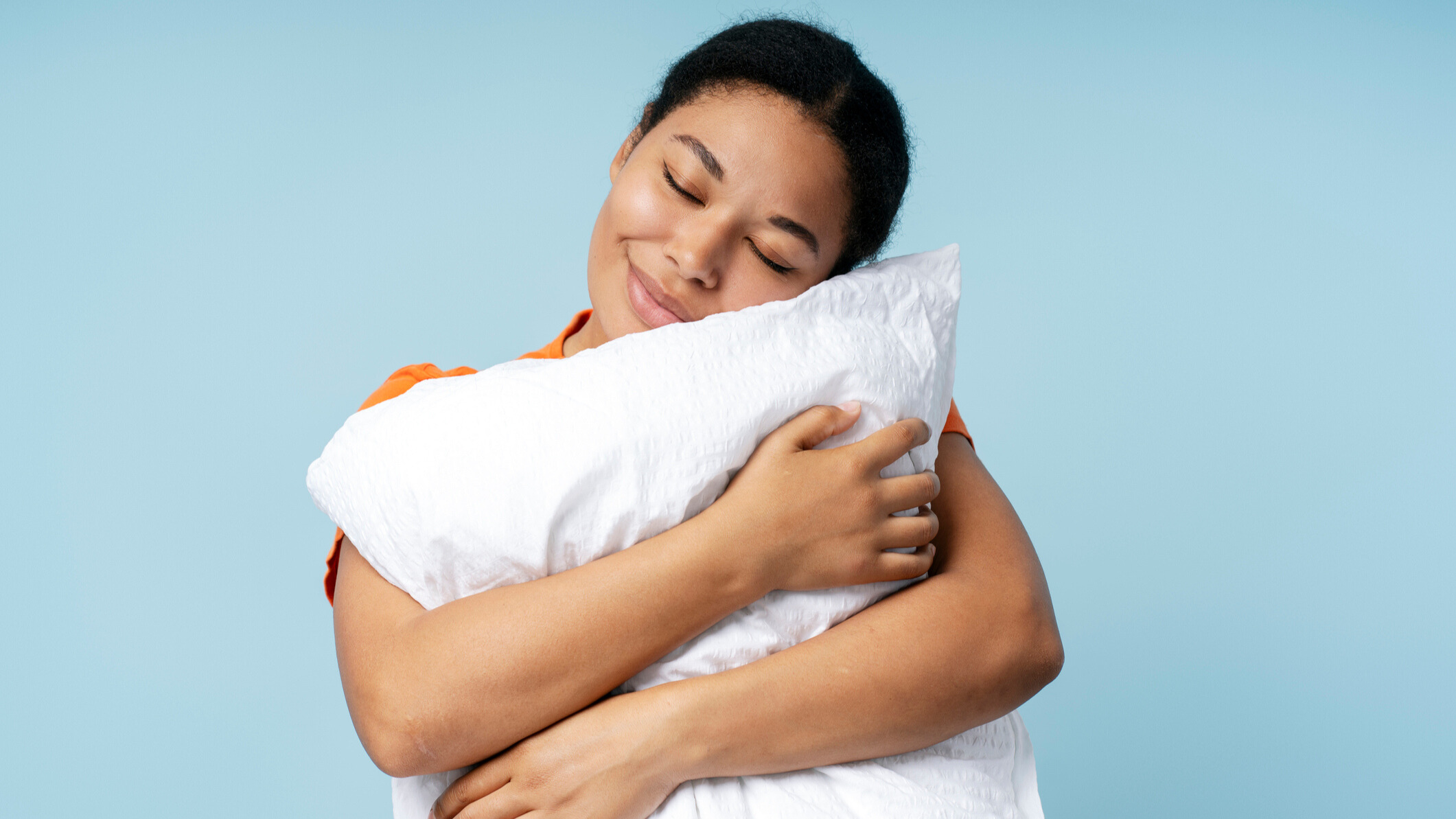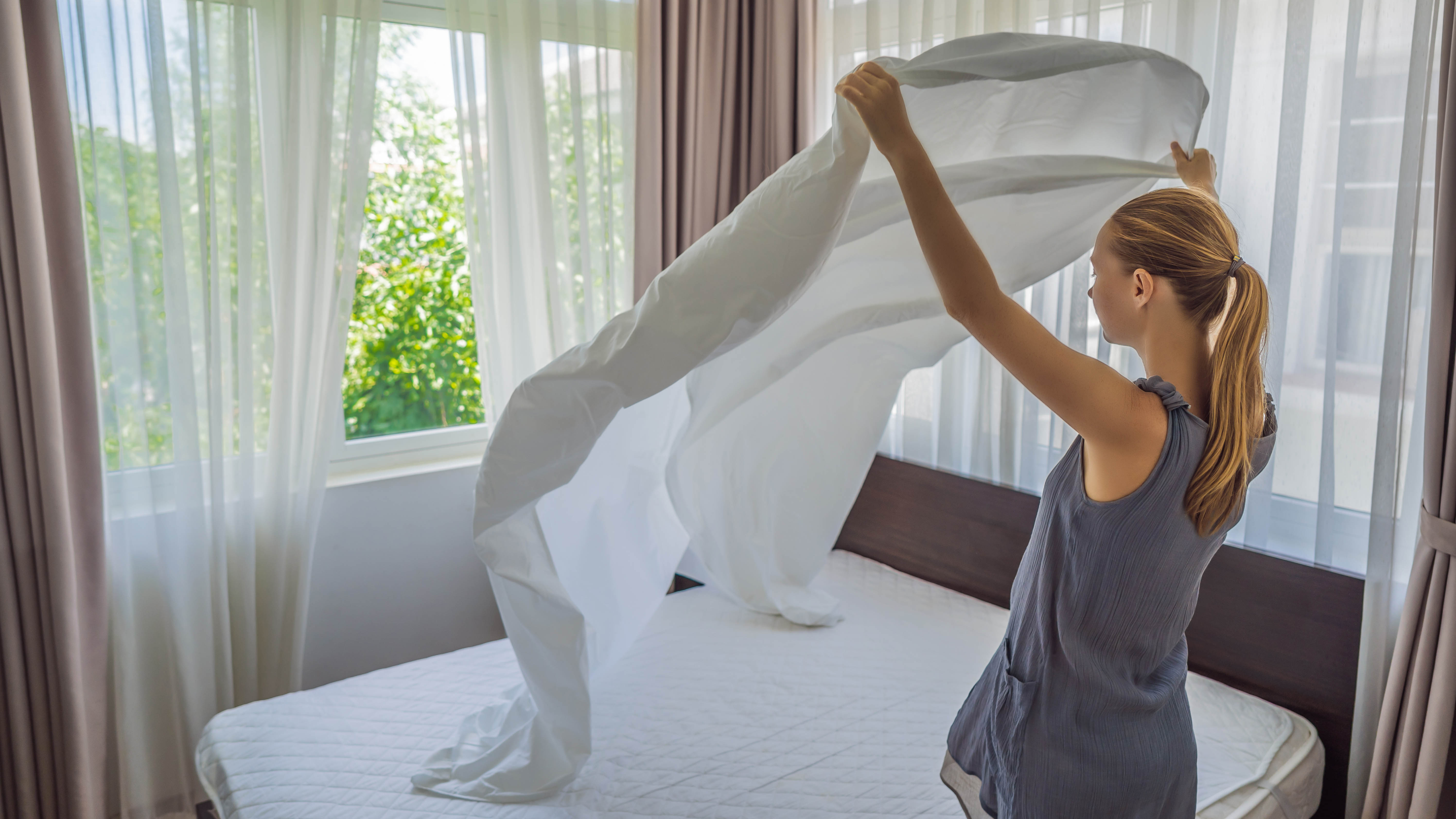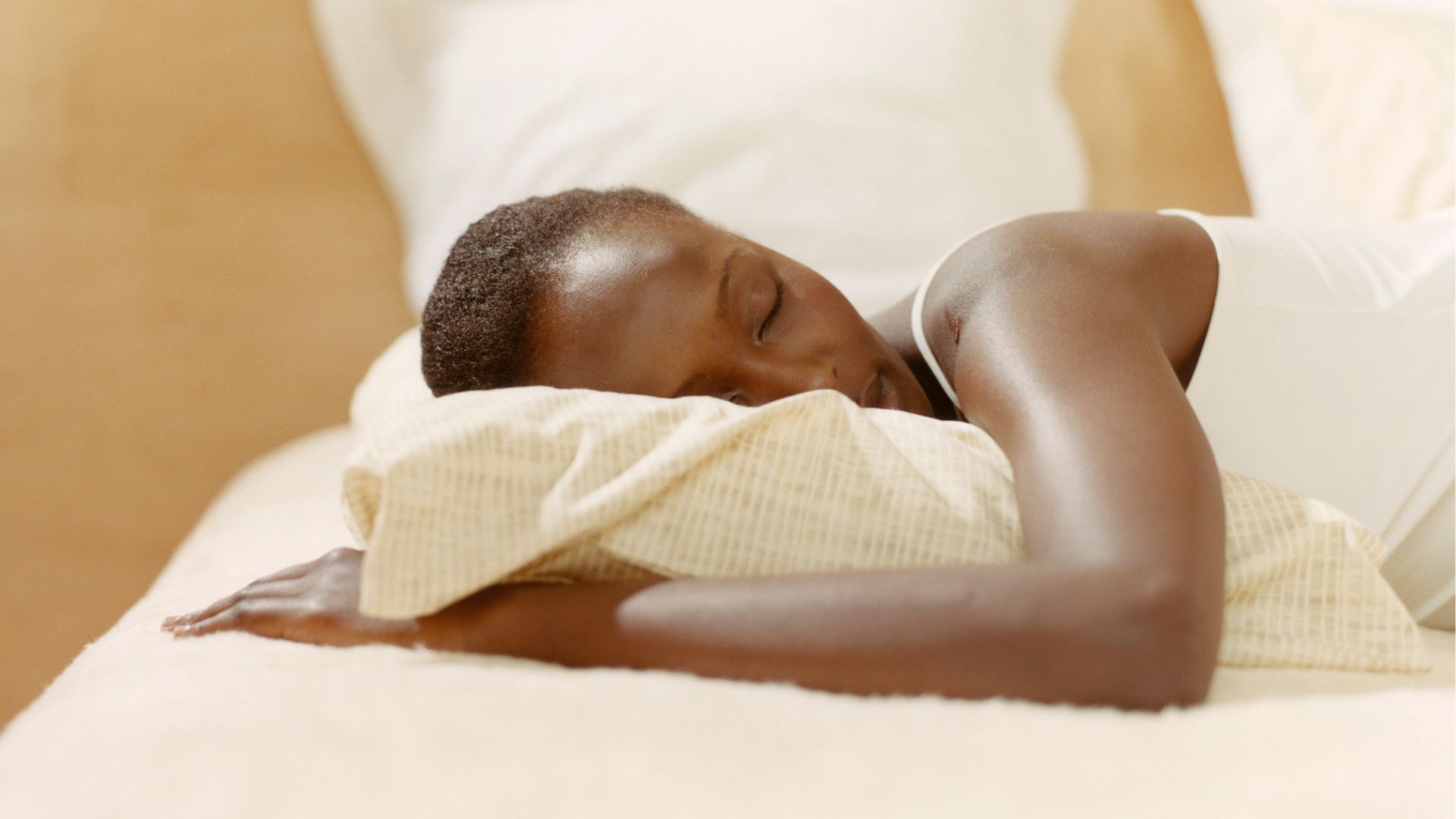What is cooling bedding and how does it work?
Everything you need to know about cooling sheets, pillows, comforters and more

Summer is right around the corner, which means it’s a great time to switch up your bedding to avoid overheating, night sweats and discomfort. One option to assist you in getting a good night’s sleep, and something hot sleepers will likely be familiar with, is cooling bedding.
Temperature regulation is a key factor we consider while testing mattresses, the best pillows and other bedding here at Tom's Guide. And, of course, when it comes to cooling bedding it's crucial. But what exactly should you be looking for?
Whether you’re a hot sleeper already using cooling pillows, comforters or sheets and want to know more about how they work, or a complete newbie to cooling bedding in general, this quick read will help you pick the right products for a good night’s rest. Let’s start with the basics first..
What is cooling bedding?
Cooling bedding refers to bedding which has been specifically designed to help regulate your body temperature throughout the night. This includes pillows, pillowcases, sheets, comforters and mattress protectors.
They are crafted from soft, breathable and moisture-wicking fabrics such as cotton, bamboo and down, and sometimes feature temperature materials with temperature regulating properties, such as copper and graphite.

They can even have cooling tech such as gel-infused foams and phase change materials (PCMs), and overall they are a boon for hot sleepers or those who reside in warmer locales.
Cooling bedding generally works by absorbing and dispersing excess heat, and preventing any overheating and sweating by promoting better airflow. This helps you sleep soundly without any stuffiness or discomfort.
Sign up to get the BEST of Tom's Guide direct to your inbox.
Get instant access to breaking news, the hottest reviews, great deals and helpful tips.
Does cooling bedding actually work?
The short answer is yes. It can work wonders for individuals who are prone to overheating and night sweats, and help keep you comfortable during warmer weather.
Cooling bedding generally derives its 'coolness' from the breathable materials used in its construction (more on this below), and these (often natural) materials are light, quick-drying and moisture-wicking, which helps to keep you dry and fresh during sleep.

Take, for example, the Olive + Crate Luxury Series bedding set, a pillowcases and sheet set made from from eucalyptus-derived Tencel Lyocell fibers, which is naturally breathable and 'cool to touch.'
In some cases, it's cooling tech such as the PCMs included in the cover of the Casper Foam Pillow with Snow Technology which creates this 'cool-to-touch' feel. You might also find gel-infused memory foam, which works to absorb and dissipate heat.
However, results are bound to vary depending on factors like your room temperature, mattress type (for example, memory foam beds are known for trapping heat) and the status of your health.
What to look for choosing cooling bedding
1. Materials
Considering their natural cooling properties, plant-derived fabrics and materials are commonly used in crafting cooling bedding. This is because these are super soft, lighter, quick-drying and moisture wicking.
Hot sleepers are better off generally steering away from synthetic materials which can trap heat. Here are some ideal materials to look for when shopping cooling bedding:
- Cotton and cotton blends: This a top choice among bedding manufacturers as cotton is not only naturally breathable and light, but also moisture-wicking and quick drying.
- Tencel-Lyocell: Derived from wood (in most cases, eucalyptus), Tencel-Lyocell is useful for creating that 'cool-to-touch' sensation in bedding. This highly sustainable fabric is breathable and wrinkle-resistant making it a common element in comforters and mattress protectors.

- Bamboo: Another natural fiber, bamboo is moisture-wicking, breathable and can even be cooler than cotton.
- Down: The comfort, temperature regulation and support natural down provides makes it great for providing insulation in winter and, if you pick a lower fill, comfy breathability in the warmer months, which is why it is often used to create plush luxury bedding like high-end hotel pillows.
- Down-alternative: The next best thing for those who struggle with down allergies. It provides similar cooling comfort as natural down when used in bedding, while being hypoallergenic and easier to maintain.
2. Thread count and certifications
Thread count refers to the number of threads (total of horizontal and vertical) in one square inch of the fabric The higher the thread count, more the fabric traps in heat, making it suitable for colder locales and winter. A lower thread count denotes a looser weave, and generally somewhere between 180 to 300 thread count is considered better for hot sleepers and use in warmer months.
Certifications like Global Organic Textile Standard (GOTS) for organic fibers denote that the materials used are indeed fully organic, and therefore free from synthetic fibers that may contribute to overheating. It's also useful to look out for OEKO-TEX standard 100, which lets you know it the materials in the product have been deemed non-toxic.
3. Reviews

Even if the bedding you're looking at advertises itself as including top cooling tech, it might not be effective when you're actually sleeping on it. This is where reviews based on real-life experiences of using these products are extremely useful. They allow you to hear directly from hot sleepers and sleep experts and make a more informed decision prior to your purchase.
The Tom's Guide Sleep team reviews bedding, from mattress protectors to pillows and more, which, along with looking at reviews on each brand's product page, you can refer to before you make your choice on cooling bedding.
What cooling bedding should you buy?
Cooling bedding is a great way to ensure a comfortable bedroom throughout the summer, (along with one of the best cooling mattresses, of course), and depending on your sleeping style, body type and preferences there is a wide range to choose from.
- Pillows: Natural down, latex, wool, cotton and down alternative are all good fill choices for hot sleepers and summer months. You can also opt for pillows which incorporate cooling tech, like the Coop Cool+ which features cooling gel-infused foam fill (our top pick for a cooling pillow). If you're looking for an organic option, the Saatva Latex Pillow is excellent at temperature regulation.
- Sheets: Aim to add in a 'no-nonsense' light bedsheet preferably made of bamboo or cotton or other natural fabrics mentioned above. The ideal thread count when purchasing bedsheets for summer is generally between 180 to 300, to ensure breathability. If you're looking for luxury, Tempur-Pedic's Pro Air sheet set uses a blend of Tencel-Lyocell and cotton for a premium cool sleep.
- Comforters: Checking fill power is key here (ideally select between 400-600) when shopping for a comforter during the warmer months. You can also go for the Brooklinen Down comforter, our best comforter of the year which is an all-season model.

Becky is a Sleep Staff Writer at Tom’s Guide covering all things sleep-related including product reviews, research studies, news and explainers. She works on specialist bedding content and is responsible for buyer’s guides like the best pillows for all sleepers and best mattress protectors focusing on popular brands such as Tempur-Pedic, Avocado, Coop Home Goods and more. Becky is a PPA accredited journalist who is keen to explore the intricacies of sleep, its effects on skincare, mental wellbeing and work performance. While not thinking of sleep, she can be seen reading in cosy bookshops or learning about global food culture.
You must confirm your public display name before commenting
Please logout and then login again, you will then be prompted to enter your display name.
